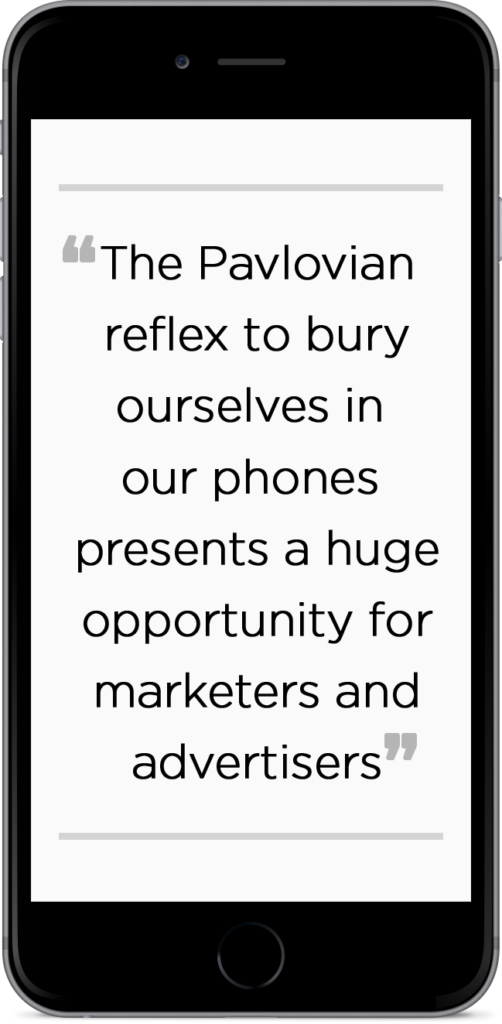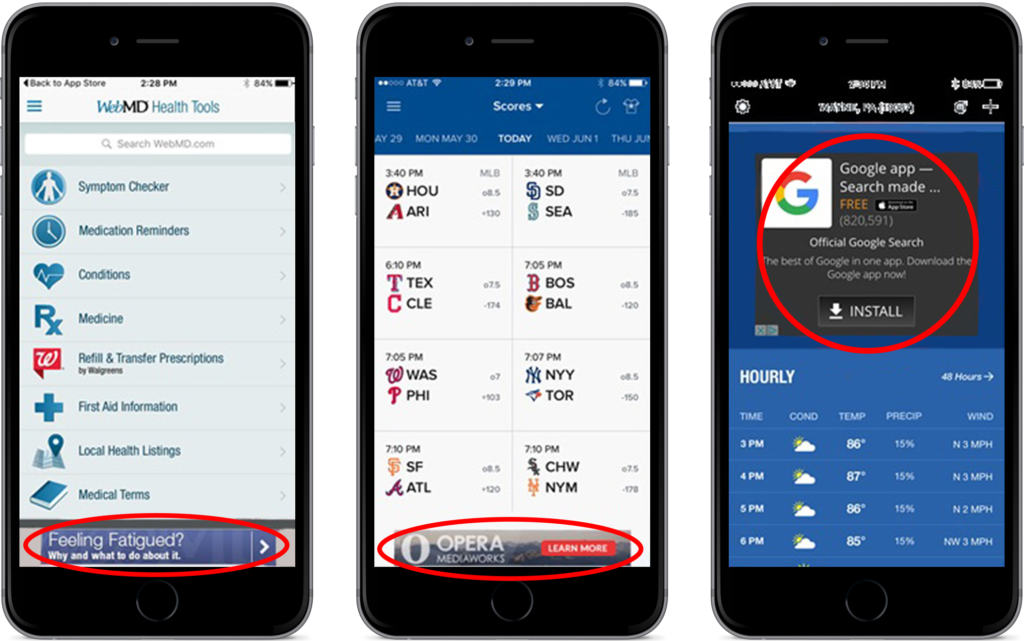Does Your Mobile Direct Response Strategy include In-App Marketing? It Should.
Emmy Izykowski Digital Direct Marketing, Response MarketingTake a look around and you’ll see someone (everyone?) with their heads buried in or stealing a glance at their smartphone. It’s what we do to stay connected and try not to miss anything, whether for work or pleasure. Chances are that what’s on the screen isn’t just email, but an app for informing, purchasing, or entertaining.
 The Pavlovian reflex to bury ourselves in our phones that our society has succumbed to presents a huge opportunity for marketers and advertisers. In this post I’ll explore just how much mobile continues to grow and why you should consider in-app marketing to drive direct response.
The Pavlovian reflex to bury ourselves in our phones that our society has succumbed to presents a huge opportunity for marketers and advertisers. In this post I’ll explore just how much mobile continues to grow and why you should consider in-app marketing to drive direct response.
Mobile usage, and your marketing opportunity, continues to grow.
It should come as no surprise that across the globe, mobile device usage continues to skyrocket, driven primarily by consumer demand.
According to comScore, “the latest data shows that we are now well past the tipping point: Mobile digital media time in the US is now significantly higher at 51% compared to desktop (42%).”
Another consideration is how much time people spend using mobile apps versus mobile sites. “Data from Nielsen on mobile media time shows the consumer preference for mobile apps, which account for 89% of media time in mobile” as opposed to web browsing.
For these reasons, the world of in-app marketing is gearing up to take off. Advertising platform Smaato reported that share of in-app mobile ad spending increased 13% in 2015. eMarketer projected in-app ad spend ($29.66b) to nearly triple mobile Web spend ($10.84b) this year.
But what exactly is in-app marketing? As its name suggests, it is marketing that displays directly within an app while it is being used. There are two primary types of in-app marketing: in-app messages and in-app advertisements.
In-app messages offer a unique opportunity to grab consumer attention.
An in-app message is a message that’s delivered exclusively to users who are engaging with your brand via app. Starbucks is a brand that provides great in-app messaging content. As a Starbucks gold member, my account is linked to the Wallet app on my iPhone for convenience. However, I constantly open the Starbucks app to check my messages, which often include free music, app downloads, beverage coupons, store specials, and more. I don’t use the app for regular transactional purposes, yet I still check it regularly because the content is so engaging and relevant to me. While I am only a case study of one, I think that’s quite impressive, especially for an impatient/typical mobile user like me.
Looking for more intrusive messaging? In-app advertisements may be your answer.
Similar to in-app messages, in-app ads are served to users who are actively engaged in a mobile app. In-app advertising started to gain traction around 2011 as an alternate method for developers and publishers to monetize apps as users became less inclined to pay for them.
The advertisements themselves can take the form of a static ad that appears inconspicuously somewhere on your device screen (anchored at the top or bottom, or floating) or a video ad that can be closed after a few seconds (“Skip This Ad”) or remain on screen for the full duration (up to 30 seconds).
Many gaming apps employ a strategy that automatically plays video ads or gives a user the option to play in exchange for something else of value within the app. For example, in some games a user can opt to watch a video ad that will earn some type of reward within the game in exchange for the “view” or impression the developer just sold.
The list of big name brands that offer in-app advertising (i.e., WebMD, The Weather Channel, and CBS Sports) continues to grow. Developers and publishers like in-app ads because they provide a non-intrusive way to monetize the app. Brands like them because they can be delivered to a highly targeted, relevant market.
Where are your targets? Find them in relevant apps.
Now that you’ve had a crash course in in-app marketing, how can you weave it into your direct response marketing mix? As mentioned at the start, all demographics from Millennials to Baby Boomers are increasing their use of mobile devices. Which apps do your target audiences use? What types of ads and messages elicit the best response?
In a future blog post, I’ll take a deeper dive into how to leverage your in-app marketing effectively while maintaining a pleasant UX for your clients and prospective clients. In the meantime, read more about how DMW Direct has helped its clients through mobile marketing, or contact us to see if we can help you.